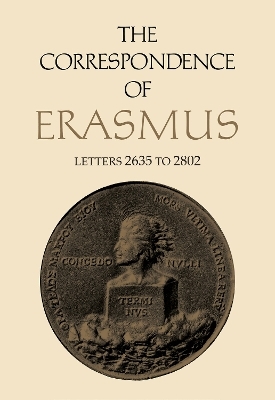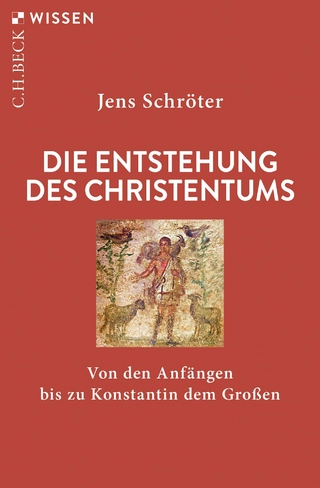
The Correspondence of Erasmus
Letters 2635 to 2802, Volume 19
Seiten
2019
University of Toronto Press (Verlag)
978-1-4875-0458-8 (ISBN)
University of Toronto Press (Verlag)
978-1-4875-0458-8 (ISBN)
This volume includes Erasmus’s correspondence for the months April 1532 to April 1533.
This volume includes Erasmus’ correspondence for the months April 1532 to April 1533, a period in which he feared a religious civil war in Germany. In his desire to move somewhere far enough from Germany to be safe and yet not so far that an old man could not undertake the journey, Erasmus eventually decided to accept the invitation from Mary of Hungary, regent of the Netherlands, to return to his native Brabant. In March 1533, the terms of Erasmus’ return were settled and in July they were formally approved by the emperor. But by this time Erasmus’ fragile health had already declined to the point that he could not undertake the journey, and he would never recover sufficiently to do so. The works published in the months covered by this volume include the eighth, much-enlarged edition of the Adagia, and the Explanatio symboli, the catechism that delighted Erasmus’ followers but gave Martin Luther much ammunition for a brutal attack on him in his Epistola de Erasmo Roterodamo of 1534.
This volume includes Erasmus’ correspondence for the months April 1532 to April 1533, a period in which he feared a religious civil war in Germany. In his desire to move somewhere far enough from Germany to be safe and yet not so far that an old man could not undertake the journey, Erasmus eventually decided to accept the invitation from Mary of Hungary, regent of the Netherlands, to return to his native Brabant. In March 1533, the terms of Erasmus’ return were settled and in July they were formally approved by the emperor. But by this time Erasmus’ fragile health had already declined to the point that he could not undertake the journey, and he would never recover sufficiently to do so. The works published in the months covered by this volume include the eighth, much-enlarged edition of the Adagia, and the Explanatio symboli, the catechism that delighted Erasmus’ followers but gave Martin Luther much ammunition for a brutal attack on him in his Epistola de Erasmo Roterodamo of 1534.
Desiderius Erasmus (c. 1466–1536), a Dutch humanist, Catholic priest, and scholar, was one of the most influential Renaissance figures. A professor of divinity and Greek, Erasmus wrote, taught, and travelled, meeting with Europe’s foremost scholars. A prolific author, Erasmus wrote on both ecclesiastic and general human interest subjects. Clarence H. Miller is an American Professor Emeritus of English at Saint Louis University. James M. Estes is professor emeritus of history at Victoria College, University of Toronto.
Illustrations
Preface
Map showing the principal places mentioned in volume 19
Letters 2635 to 2802
Table of Correspondents
Works Frequently Cited
Short-Title
Forms of Erasmus’ Works
Corrigenda for Earlier Volumes
Index
| Erscheinungsdatum | 10.05.2021 |
|---|---|
| Reihe/Serie | Collected Works of Erasmus |
| Mitarbeit |
Anmerkungen: James M. Estes |
| Übersetzer | Clarence Miller |
| Zusatzinfo | 12 b&w illustrations |
| Verlagsort | Toronto |
| Sprache | englisch |
| Maße | 184 x 254 mm |
| Gewicht | 920 g |
| Themenwelt | Geschichte ► Teilgebiete der Geschichte ► Religionsgeschichte |
| Geisteswissenschaften ► Religion / Theologie | |
| ISBN-10 | 1-4875-0458-6 / 1487504586 |
| ISBN-13 | 978-1-4875-0458-8 / 9781487504588 |
| Zustand | Neuware |
| Haben Sie eine Frage zum Produkt? |
Mehr entdecken
aus dem Bereich
aus dem Bereich
Herkunft, Blüte, Weg nach Osten
Buch | Hardcover (2024)
C.H.Beck (Verlag)
CHF 55,90
Von den Anfängen bis zur Gegenwart
Buch | Hardcover (2022)
C.H.Beck (Verlag)
CHF 47,60
von den Anfängen bis zu Konstantin dem Großen
Buch | Softcover (2024)
C.H.Beck (Verlag)
CHF 16,80


